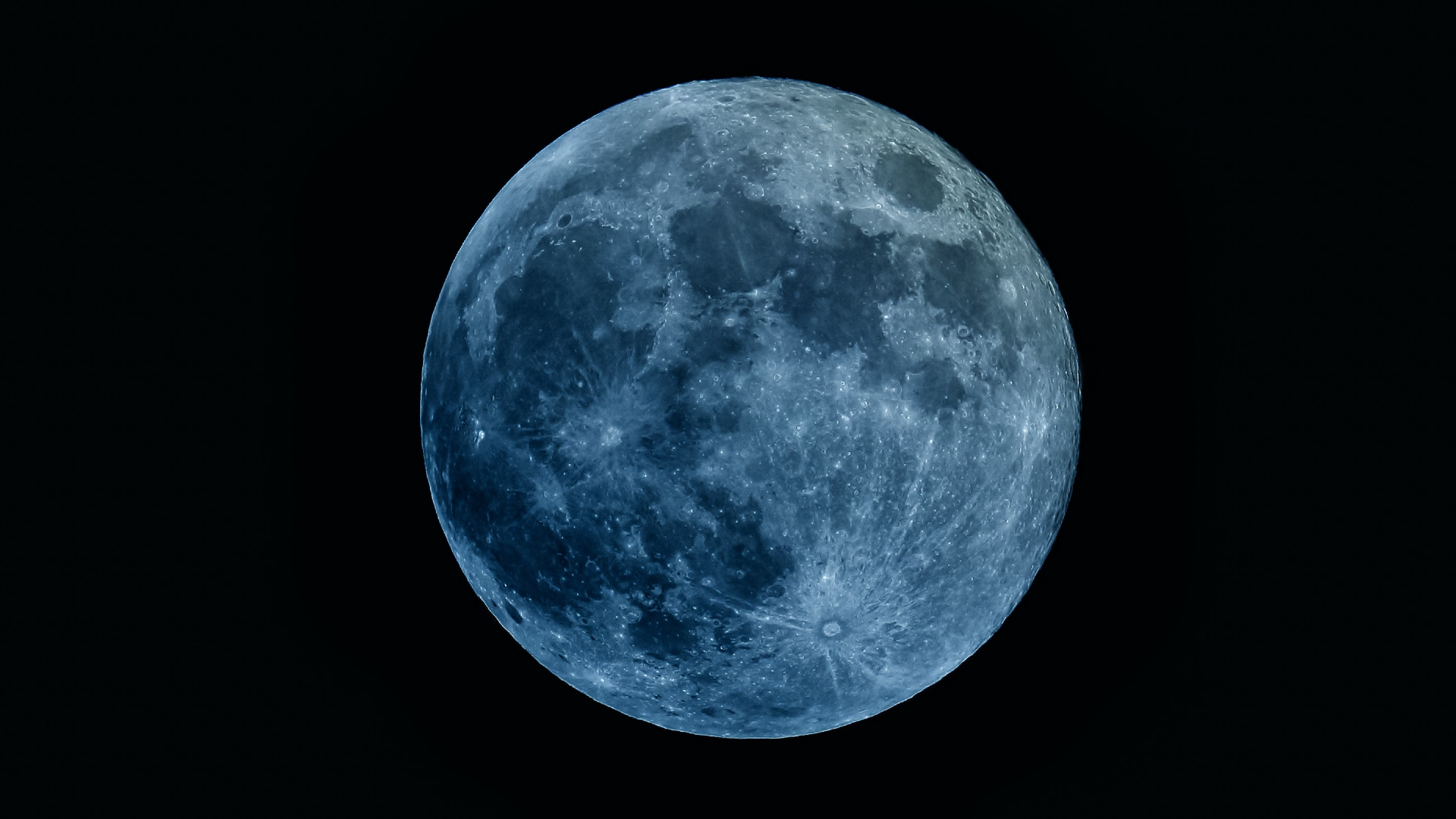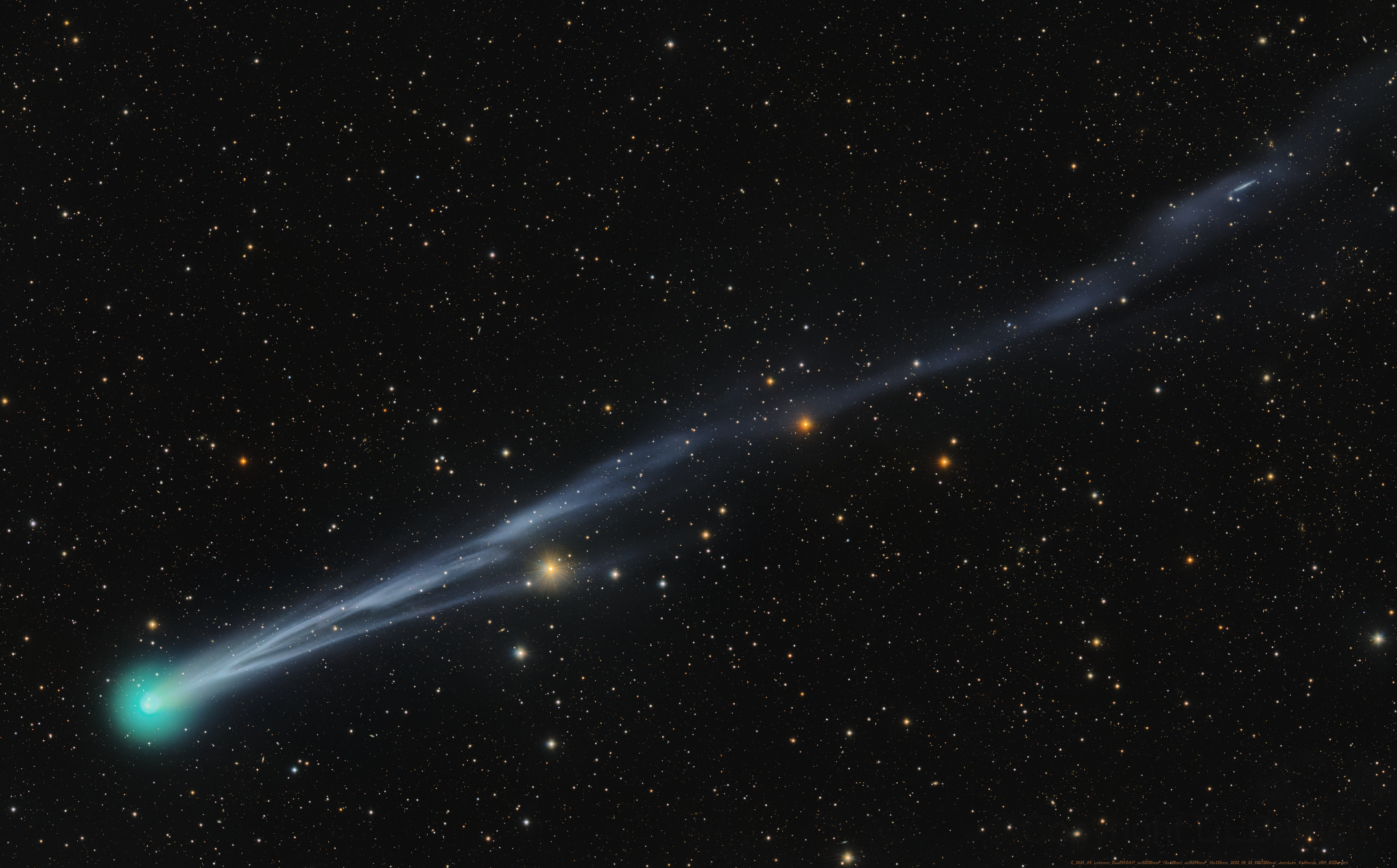Blue Moon: what is it and when is the next one?
Earth won't experience another Blue Moon until 2026. Here we explore this phenomenon in more detail.

When is the next Blue Moon?
The next Blue Moon will occur on May 31, 2026.
There are two types of Blue Moons but unfortunately, neither has anything to do with color.
A seasonal Blue Moon is the traditional definition of a Blue Moon and refers to the third full moon in a season that has four full moons according to NASA. The second definition — which arose from a misunderstanding of the original — is the monthly Blue Moon, referring to the second full moon in a single calendar month. Today, this monthly Blue Moon is accepted as an alternative definition rather than a mistake, according to Time and Date.
The upcoming Blue Moon on May 31, 2026, will be a monthly Blue Moon.
Related: What is a blood moon?
What is a Blue Moon?
As the cycle of the phases of the moon lasts approximately one month, we typically experience 12 full moons each year. Many cultures have given distinct names to each month's full moon. 12 months, 12 full moons, 12 names. Simple right?
Well, not quite. Here's where the Blue Moon comes into the equation.
The moon phases actually take 29.5 days to complete which means it takes just 354 days to complete 12 lunar cycles. So every 2.5 years or so a 13th full moon is observed within a calendar year.
This 13th full moon doesn't conform to the normal naming scheme and is referred to as the Blue Moon.
Breaking space news, the latest updates on rocket launches, skywatching events and more!
How often do Blue Moons occur?
Despite the common saying "once in a blue moon," Blue Moons actually occur fairly regularly in astronomical terms.
According to NASA, a Blue Moon happens approximately every two to three years. Since there are about 29.5 days between full moons, February will never have a monthly Blue Moon, as it only has 28 days in a common year and 29 in a leap year. Occasionally, February may have no full moon at all, a phenomenon known as a Black Moon, according to Time and Date.
When are the next monthly and seasonal Blue Moons?
The next monthly Blue Moon is on May 31, 2026, according to Time and Date.
The next seasonal blue moon will be on Aug. 21, 2032.
When was the last Blue Moon?
The last Blue Moon was on Aug. 19, 2024.
Related: Supermoon Blue Moon 2024: Top photos from around the world
If you're interested in trying to capture an impressive lunar image yourself and want to learn the right techniques and tools, check out our handy how to photograph the moon guide.
Can the moon ever turn blue?
Yes! But this is an extremely rare event, you could even say it happens "once in a Blue Moon".
According to NASA in 1883 an Indonesian volcano called Krakatoa erupted and spread ash as high as 50 miles (80 kilometers) into the atmosphere. The tiny ash particles — about one micron in size — acted as a filter, scattering red light and turning the moon a distinct blue-green hue.
According to NASA Science, other volcanic eruptions have also been known to cause blue moons including the 1983 eruption of El Chichon volcano in Mexico and the eruptions of Mt. St. Helens in 1980 and Mount Pinatubo in 1991.
Blue Moon FAQs answered by an expert
We asked meteorologist Joe Rao, a few commonly asked questions about the Blue Moon.

Joe Rao is Space.com's skywatching columnist, as well as a veteran meteorologist and eclipse chaser who also serves as an instructor and guest lecturer at New York's Hayden Planetarium.
What is a Blue Moon?
Either a calendrical oddity or the moon actually appearing blue to the eye. This poetic phrase refers to something extremely rare in occurrence.
Does the moon ever turn blue?
Only under certain atmospheric conditions. In the aftermath of the massive 1884 volcanic eruption of Krakatoa, a tremendous cloud of ash and dust was injected into the stratosphere (5 to 30 miles above the Earth's surface); this aerosol cloud caused both the moon and sun appear blue from many locations in the Northern Hemisphere for many months after the explosion.
And on September 24th, 1950, a 200-mile-wide swath of smoke from a series of smoldering fires in the forests of Northern Alberta in Canada cast an awesome pall over the Great Lakes, parts of New York State and Southern New England. The smoke produced an unusual midday darkness and caused the disk of the sun to shine in eerie hues of pink, blue and even purple!
How often is a Blue Moon?
To see the moon actually turn blue, requires either a massive volcanic eruption or a giant pall of airborne smoke (such as in 1950). But such events are few and far between . . . perhaps occurring only about half a dozen times per century. Calendrical blue moons are much more frequent, occurring (on average) about every 2.5 to nearly 3 years.
Additional information
Explore Blue Moons in a nutshell with ESA's useful Blue Moon infographic. Check out this cool image of a Blue Moon captured by the European weather satellite MSG-3 just before the moon disappeared out of sight. Discover the difference between types of full moons with NASA.
Bibliography
Mohon, L. (2021, August 20). Blue Moon – Watch the skies. NASA. Retrieved April 21, 2022, from https://blogs.nasa.gov/Watch_the_Skies/tag/blue-moon/
NASA. (n.d.). Blue Moon. NASA. Retrieved April 21, 2022, from https://science.nasa.gov/science-news/science-at-nasa/2004/07jul_bluemoon
Hocken, V., & Kher, A. Look up for a blue moon! What Is a Blue Moon? Retrieved April 21, 2022, from https://www.timeanddate.com/astronomy/moon/blue-moon.html#:~:text=The%20next%20monthly%20Blue%20Moon,are%20traditionally%20called%20Sturgeon%20Moons.&text=There%20is%20no%20Blue%20Moon%20in%202022.

Daisy Dobrijevic joined Space.com in February 2022 having previously worked for our sister publication All About Space magazine as a staff writer. Before joining us, Daisy completed an editorial internship with the BBC Sky at Night Magazine and worked at the National Space Centre in Leicester, U.K., where she enjoyed communicating space science to the public. In 2021, Daisy completed a PhD in plant physiology and also holds a Master's in Environmental Science, she is currently based in Nottingham, U.K. Daisy is passionate about all things space, with a penchant for solar activity and space weather. She has a strong interest in astrotourism and loves nothing more than a good northern lights chase!

